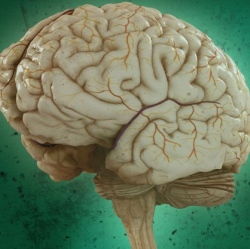
Researchers found that applying transcranial alternating current stimulation (TACS) through the scalp helped to synchronize brain waves in different areas of the brain, enabling subjects to perform better on tasks involving short-term working memory.
The hope is that the approach could one day be used to bypass damaged areas of the brain and relay signals in people with traumatic brain injury, stroke, or epilepsy.
“What we observed is that people performed better when the two waves had the same rhythm and at the same time,” said Ines Ribeiro Violante, PhD, a neuroscientist in the Department of Medicine at Imperial, who led the research. The current gave a performance boost to the memory processes used when people try to remember names at a party, telephone numbers, or even a short grocery list.
Violante and team targeted two brain regions, the middle frontal gyrus and the inferior parietal lobule, which are known to be involved in working memory.
Ten volunteers were asked to carry out a set of memory tasks of increasing difficulty while receiving theta frequency stimulation to the two brain regions at slightly different times (unsynchronised), at the same time (synchronous), or only a quick burst (sham) to give the impression of receiving full treatment.
In the working memory experiments, participants looked at a screen on which numbers flashed up and had to remember if a number was the same as the previous, or in the case of the harder trial, if the current number matched that of two-numbers previous.
Results showed that when the brain regions were stimulated in sync, reaction times on the memory tasks improved, especially on the harder of the tasks requiring volunteers to hold two strings of numbers in their minds.
“The classic behavior is to do slower on the harder cognitive task, but people performed faster with synchronized stimulation and as fast as on the simpler task,” said Violante.
Previous studies have shown that brain stimulation with electromagnetic waves or electrical current can have an effect on brain activity, the field has remained controversial due to a lack of reproducibility. But using functional MRI to image the brain enabled the team to show changes in activity occurring during stimulation.
“The results show that when the stimulation was in sync, there was an increase in activity in those regions involved in the task. When it was out of sync the opposite effect was seen,” Violante explained.
“The next step is to see if the brain stimulation works in patients with brain injury, in combination with brain imaging, where patients have lesions which impair long range communication in their brains,” said Violante. “The hope is that it could eventually be used for these patients, or even those who have suffered a stroke or who have epilepsy.
The researchers also plan to combine brain stimulation with cognitive training to see if it restores lost skills.
The research was funded by the Wellcome Trust.
